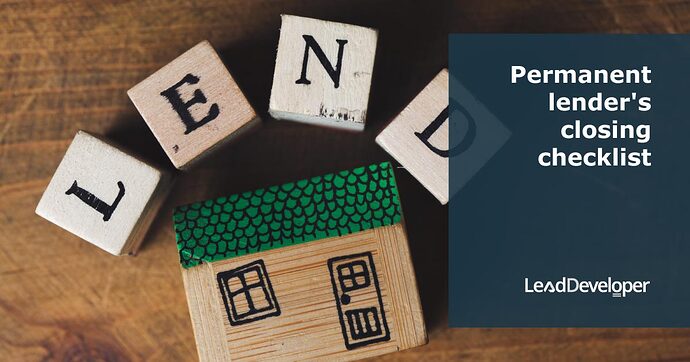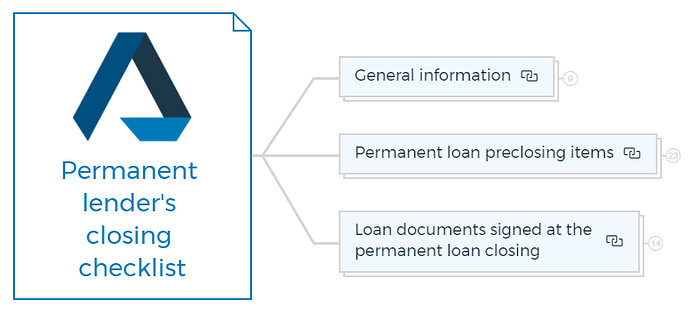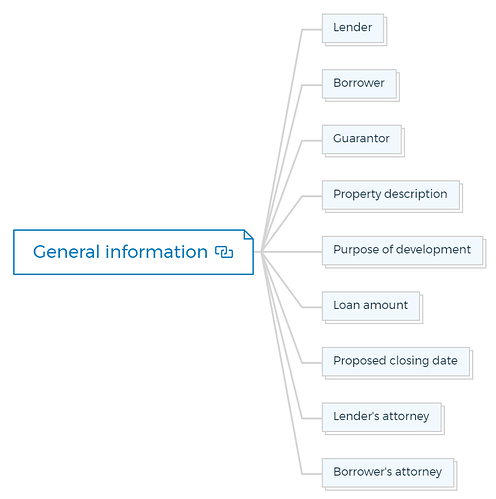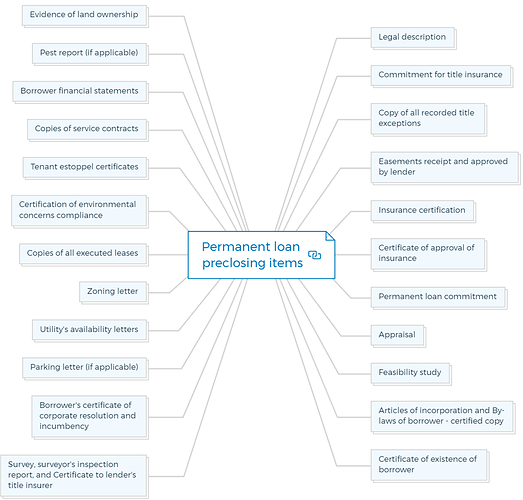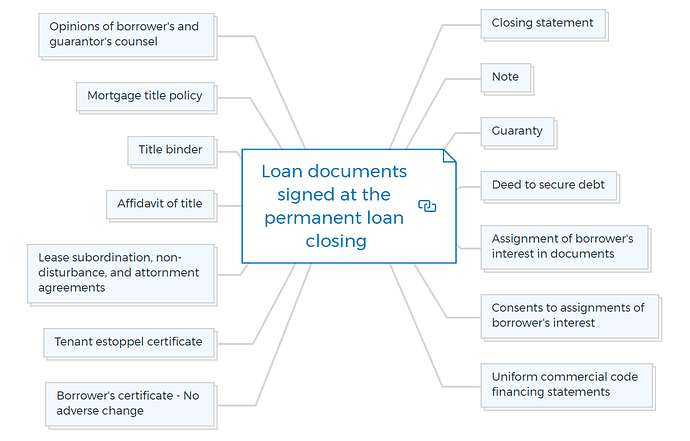Once the lender has granted approval for the loan, the developer’s attorney, along with the lender’s attorney, must collaboratively create a comprehensive closing checklist encompassing all essential components necessary to finalize the transaction.
Subsequently, the property developer should arrange and assign tasks within their team to expedite the completion of the transaction. The below list represents the various categories of requirements essential before the closing process.
1. General information
1.1. Lender
The financial institution providing the loan.
1.2. Borrower
The entity or individual borrowing the funds.
1.3. Guarantor
If applicable, someone providing a guarantee for the loan.
1.4. Property description
Detailed information about the property, including its location, size, and any relevant features.
1.5. Purpose of development
The reason for which the loan is being taken, such as construction, renovation, or investment.
1.6. Loan amount
The specific amount of money being lent.
1.7. Proposed closing date
The anticipated date on which the closing will occur.
1.8. Lender’s attorney
The legal representative for the lender.
1.9. Borrower’s attorney
The legal representative for the borrower.
You are missing out if you haven’t yet subscribed to our YouTube channel.
2. Permanent loan preclosing items
2.1. Legal description
A legally accurate description of the property to be financed.
2.2. Commitment for title insurance
A promise to provide title insurance, ensuring clear ownership of the property.
2.3. Copy of all recorded title exceptions
Any existing issues or claims against the property’s title.
2.4. Easements receipt and approved by lender
Easements granted over the property to third parties, approved by the lender.
2.5. Insurance certification
Proof of property and liability insurance coverage.
2.6. Certificate of approval of insurance
Lender’s confirmation of insurance coverage.
2.7. Permanent loan commitment
A formal agreement from the lender to provide the loan.
2.8. Appraisal
An expert’s assessment of the property’s value.
2.9. Feasibility study
A study assessing the project’s viability, often for commercial properties.
2.10. Articles of incorporation and By-laws of borrower - certified copy
Legal documents of the borrower’s organization.
2.11. Certificate of existence of borrower
Proof that the borrower is a valid legal entity.
2.12. Survey, surveyor’s inspection report, and Certificate to lender’s title insurer
Property survey documentation.
2.13. Borrower’s certificate of corporate resolution and incumbency
Document verifying authority to borrow.
2.14. Parking letter (if applicable)
Confirmation of parking space availability.
2.15. Utility’s availability letters
Confirmation of utility availability for the property.
2.16. Zoning letter
Confirmation of property’s zoning compliance.
2.17. Copies of all executed leases
Copies of tenant lease agreements.
2.18. Certification of environmental concerns compliance
Verification of compliance with environmental regulations.
2.19. Tenant estoppel certificates
Tenants’ confirmation of lease terms.
2.20. Copies of service contracts
Agreements for services related to the property.
2.21. Borrower financial statements
Financial documentation of the borrower’s financial health.
2.22. Pest report (if applicable)
Assessment of pest-related issues on the property.
2.23. Evidence of land ownership
Documentation proving ownership of the land.
3. Loan documents signed at the permanent loan closing
3.1. Closing statement
Detailed financial breakdown of the transaction.
3.2. Note
A legal document outlining the terms of the loan, including repayment terms.
3.3. Guaranty
A guarantee document, if someone else is guaranteeing the loan.
3.4. Deed to secure debt
Legal document granting the lender a security interest in the property.
3.5. Assignment of borrower’s interest in documents
Transfer of borrower’s interest in documents to the lender.
3.6. Consents to assignments of borrower’s interest
Agreements from relevant parties allowing the assignment of interests.
3.7. Uniform commercial code financing statements
For personal property used as collateral.
3.8. Borrower’s certificate - No adverse change
Confirmation of no significant changes since approval.
3.9. Tenant estoppel certificate
Confirmation of lease terms from tenants.
3.10. Lease subordination, non-disturbance, and attornment agreements
Agreements between lender, borrower, and tenants.
3.11. Affidavit of title
Sworn statement regarding property title.
3.12. Title binder
Preliminary report on title insurance.
3.13. Mortgage title policy
Title insurance policy for the lender.
3.14. Opinions of borrower’s and guarantor’s counsel
Legal opinions on the transaction from borrower’s and guarantor’s attorneys.
Learn More
Each item in the checklist represents a crucial aspect of the closing process, ensuring that all legal, financial, and procedural requirements are met for the permanent loan agreement.
